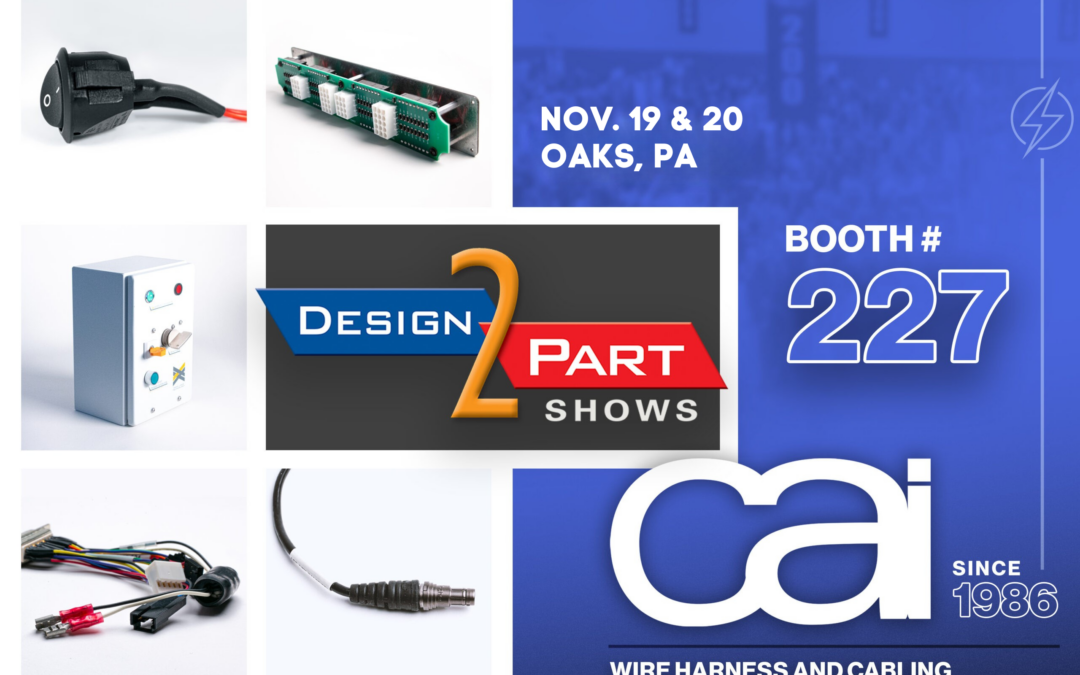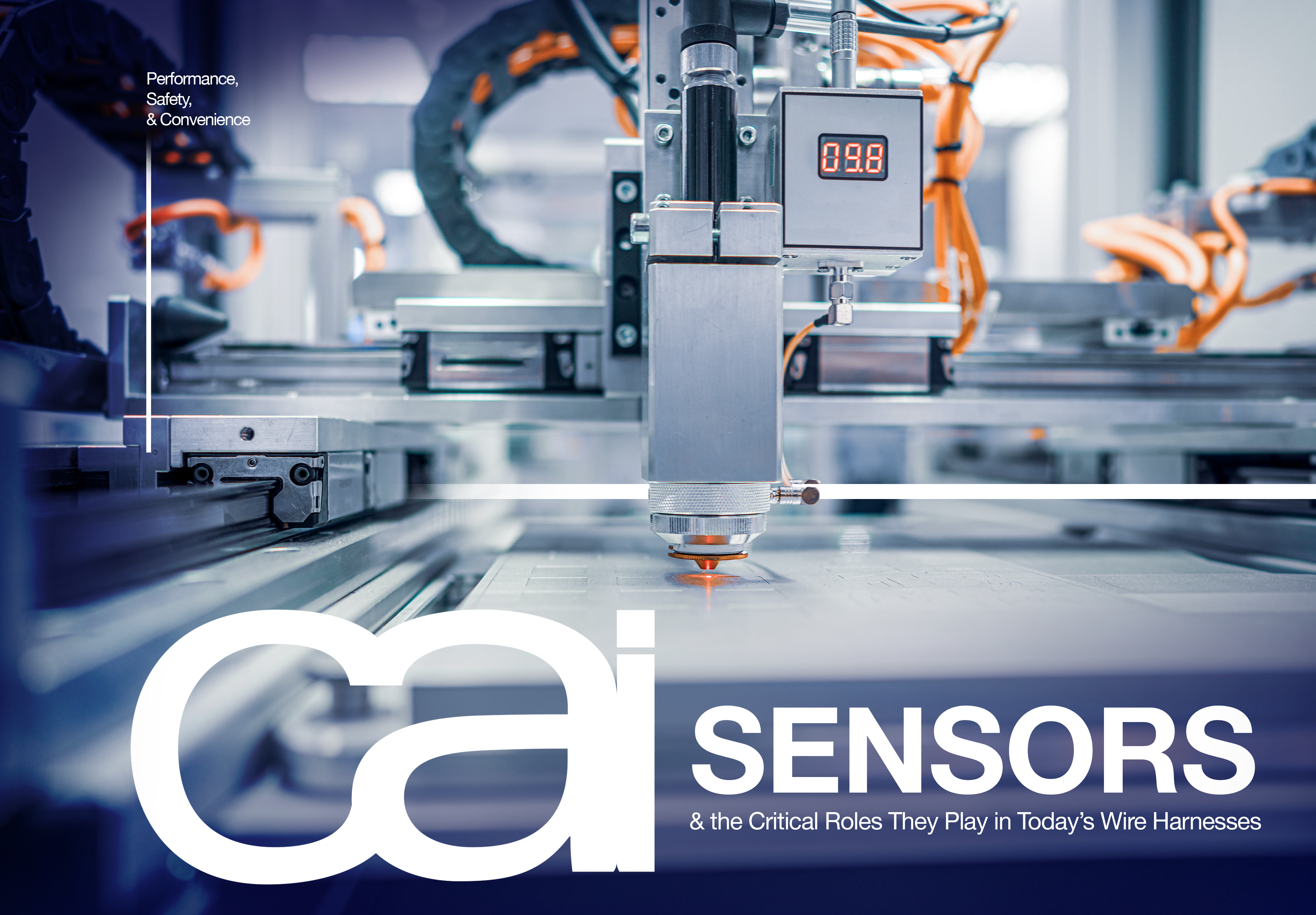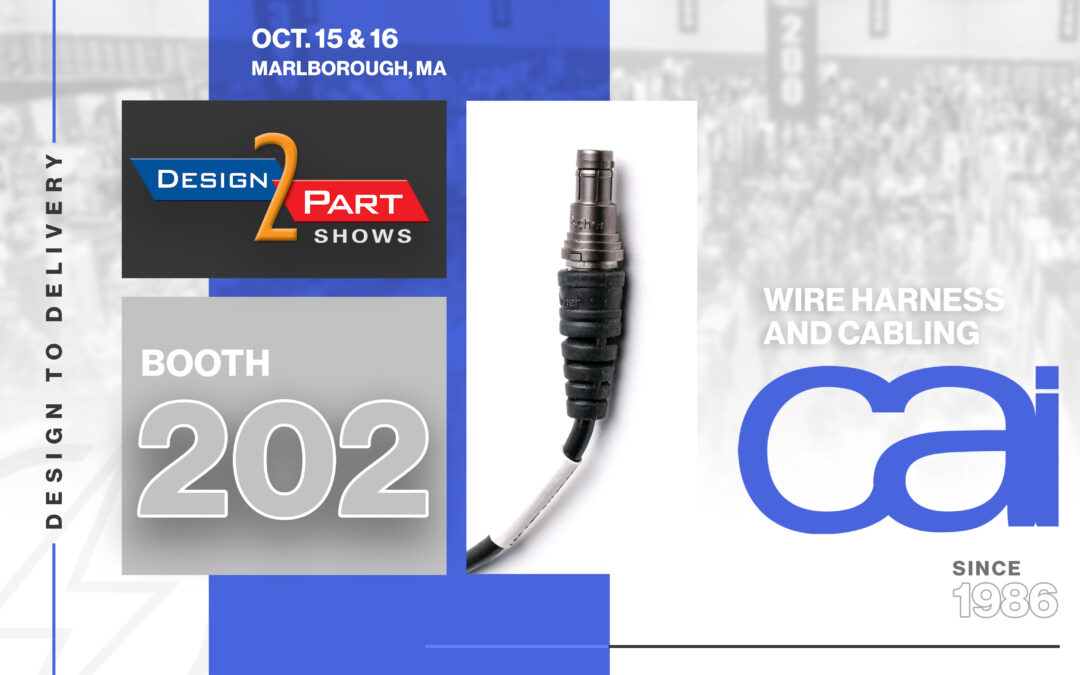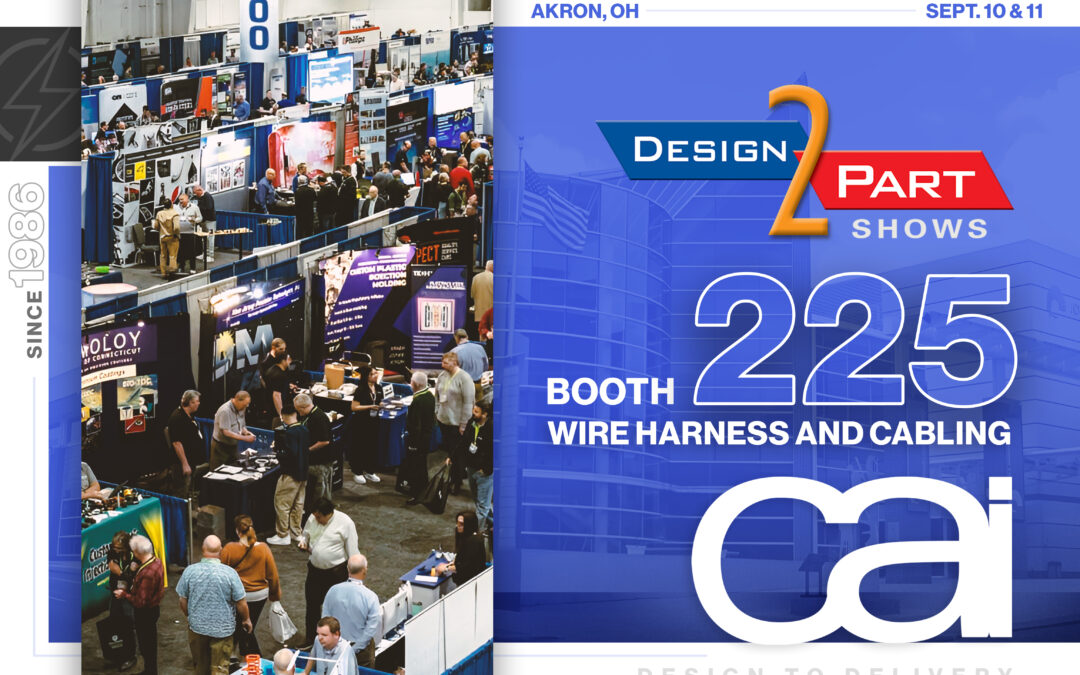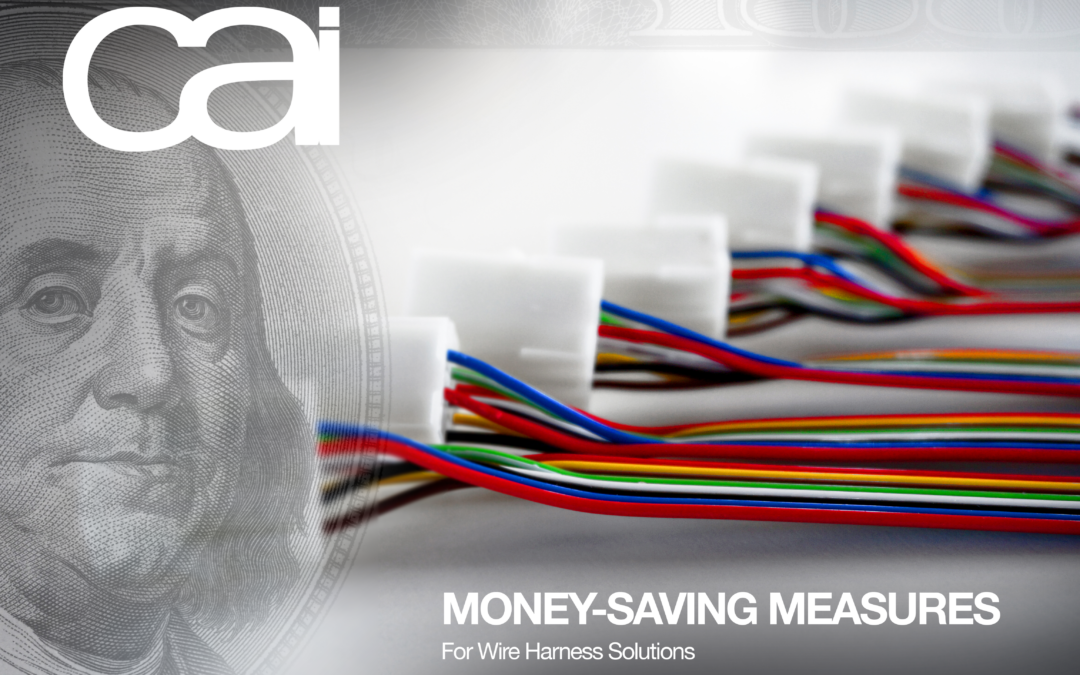Exploring 12 Common Sensor Types & Their Impact on Performance, Safety, & Convenience
From kitchen appliances to vehicles, electronic sensors have long been essential components inside the devices we enjoy as a society. Sensors are used to detect physical phenomena, such as temperature, motion, or chemicals, and turn them into electrical signals, such as voltage, current, or digital data.
These signals travel through electrical wires and cables, typically wire harnesses or cable assemblies, allowing the overall system to monitor conditions, provide feedback, and/or respond with autonomous decisions.
In today’s technology-driven world, sensor-equipped harnesses and assemblies are indispensable, providing enhanced performance, safety, and convenience in nearly every electronic device we use. For instance, modern cars are loaded with them, featuring everything rom oxygen sensors in engines to proximity sensors for help backing up. Meanwhile, hospitals use sensor-equipped devices to measure critical data such as body temperature and blood pressure.
Specializing in the manufacturing of high-quality wire harnesses and other critical electrical components, CAI has served countless satisfied clients around the globe for over 35 years. Reach out to us today with your unique manufacturing needs and we’ll help you bring your vision to life.
Here are some of the most common types of sensors used in today’s electrical devices and what they bring to the table:
Temperature Sensors
Used to measure the thermal conditions of air, liquids, and surfaces, temperature sensors are essential for maintaining system performance and safety. They are found in everything from vehicle engines to HVAC systems and household appliances, ensuring components stay within safe operating limits.
Different types serve specific purposes. Thermocouples are built for high-temperature tolerance in environments like combustion engines. RTDs (Resistance Temperature Detectors) provide highly accurate readings for industrial processes. Thermistors, which are more economical and responsive, are widely used in home electronics and temperature control systems.
Pressure Sensors
Measuring the force exerted by liquids or gases, Pressure sensors play a vital role in system monitoring and safety. They’re widely used in automotive applications, industrial controls, and medical equipment to help detect changes in pressure and maintain system stability.
Capacitive models are suitable for low-pressure environments such as air flow monitoring. Piezoelectric sensors respond quickly to dynamic pressure changes, making them ideal for engine testing. Strain gauge sensors handle high-pressure measurements in demanding industrial settings.
Position Sensors
Enabling accurate control in fields like robotics, automotive systems, and industrial automation, position sensors help determine movement, orientation, or alignment of components. They improve precision in operations such as motor positioning, assembly, or navigation.
Common position sensor technologies include potentiometers for basic rotational feedback, optical encoders for high-resolution position tracking, and LVDTs (Linear Variable Differential Transformers), which are widely used for linear measurement in heavy machinery and aerospace systems.
Speed Sensors
By tracking rotational or linear movement, speed sensors help manage performance and maintain safety in automotive engines, factory equipment, and turbines. They’re critical in applications where velocity feedback is necessary for system regulation.
Magnetic types are favored in vehicle wheel speed monitoring due to their robustness. Optical sensors offer high accuracy in sensitive systems such as aircraft turbines. Hall effect sensors are often used in electric motors and industrial drives for their consistent performance at different speeds.
Proximity Sensors
Detecting objects within a specified range without physical contact, proximity sensors improve efficiency and help reduce mechanical wear. They’re used in manufacturing, mobile devices, and vehicle safety systems for functions like automation and obstacle detection.
Inductive sensors detect metallic materials and are common on assembly lines. Capacitive types are versatile, able to detect various materials including plastics and liquids. Often found in robotics and packaging systems, photoelectric sensors use beams of light for precise object detection.
Flow Sensors
Accurate flow data is crucial for system efficiency and monitoring. Measuring the rate or volume of liquid or gas movement, flow sensors help optimize fuel delivery, control HVAC airflow, and manage resources in water treatment systems.
Ideal for clean gas environments, thermal flow sensors detect changes in temperature as fluid passes by. Common in pipelines, differential pressure models calculate flow by comparing pressure drops. Ultrasonic versions use sound waves for non-contact measurements, especially in medical or chemical settings.
Vibration Sensors
Providing insights for maintenance and safety, vibration sensors are designed to detect vibrations in machines, structures, and vehicles. They are widely used in rail systems, aerospace, and heavy machinery to identify faults before failure occurs.
Accelerometers measure movement and are common in automotive safety systems and electronics. Piezoelectric vibration sensors are highly sensitive and used to monitor precision equipment or infrastructure, offering early warnings for issues like imbalance or wear.
Optical Sensors
Capturing data based on light intensity, reflection, or interruption, optical sensors are common in fields like automation, security, and navigation. They help systems interpret environmental changes or identify objects based on optical cues.
Used in applications like ambient light adjustment, photodiodes and phototransistors convert light into electrical signals. Lidar sensors scan surroundings with lasers for 3D mapping, crucial in self-driving cars. Infrared types detect heat, enabling features like motion detection and touchless controls.
Sound Sensors
Able to detect and measure sound waves or vibrations, sound sensors, also known as acoustic sensors, convert sound signals into electrical signals that can be processed and analyzed by electronic circuits or software.
Essentially, they’re microphones that can be used in various applications, including robotics, home automation, and security systems. A diaphragm inside the sensor vibrates when hit by sound waves, and this vibration is converted into a measurable electrical signal, often analog.
Force & Tactile Sensors
Monitoring touch, pressure, or applied force, force and tactile sensors are crucial in industries such as robotics, prosthetics, and wearable tech. They enable machines to interact more precisely with their environment or users.
Used in devices like robotic grippers and pressure mats, force-sensitive resistors adjust resistance in response to pressure. Piezoelectric tactile sensors produce an electrical signal when force is applied, offering high sensitivity in medical tools and high-precision automation.
Chemical & Gas Sensors
Capable of identifying specific gases or chemical compounds, chemical and gas sensors are central to safety, compliance, and environmental monitoring. They’re essential in automotive exhaust systems, industrial leak detection, and air quality control.
Electrochemical sensors are good at detecting gases like carbon monoxide and oxygen. Metal-oxide semiconductor sensors respond to a variety of volatile compounds. Providing reliable, non-contact analysis, infrared gas sensors identify gas types based on absorption patterns in infrared light.
Level Sensors
Monitoring the levels of liquids or solids in containers or tanks, level sensors are vital in agriculture, food processing, and fluid management systems. They help prevent overflows, shortages, and inefficient use of resources.
Ideal for non-contact applications, ultrasonic level sensors measure distance by timing reflected sound waves. Capacitive models sense changes in material presence through dielectric shifts. Float switches detect rises or falls with fluid levels, triggering basic control responses.
In modern technology, there are a wide array of sensors offering different ways to enhance performance, safety, and convenience. As industries evolve, their role will only grow, as will the need for high-quality, reliable wire harnesses and other electrical components that accompany them.
From wire harnesses and cable assemblies to custom box builds and electro-mechanical assemblies, our trusted experts at CAI can take care of all your electrical component needs, providing innovative, cost-effective solutions for volumes big and small. Connect with us to discuss your next project!
